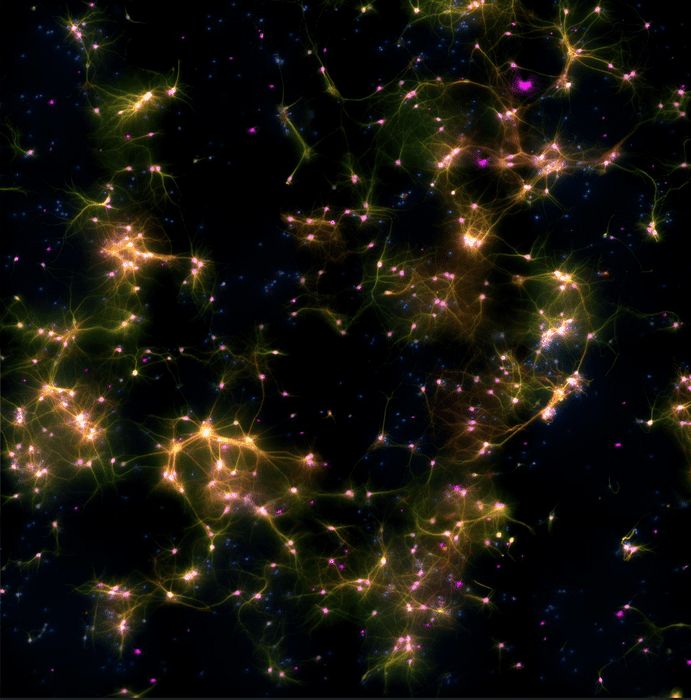
Trying to answer difficult existential questions such as ‘what is consciousness?’ or ‘what is intelligence?’ can send you down a rabbit hole for years and you still wouldn’t be able to come up with a comprehensive or satisfying answer. One thing’s for sure though: they both originate in the brain. No brain? No consciousness. It does make sense to turn to the fundamental unit of intelligence to unravel all kinds of mysteries pertaining to the brain, namely neurons.
Some scientists have tried to mimic the human brain using computers and artificial intelligence machine learning algorithms. Researchers in Australia took things to the next level though. They made a huge soup of 800,000 human and mouse brain cells living in a dish. This tangled mess of wet hardware was somehow coaxed to perform goal-directed tasks, including playing the 1972 cult classic video game Pong and even Chrome’s 404 jumping T-rex game.
“We have shown we can interact with living biological neurons in such a way that compels them to modify their activity, leading to something that resembles intelligence,” says lead author Dr. Brett Kagan, who is Chief Scientific Officer of biotech start-up Cortical Labs.
These remarkable developments prove that even simple brain cells in a dish can exhibit a kind of intelligence, modifying their behavior over time through reinforced learning.
The system, known as BrainDish, was hooked up to a computer through electrodes that relayed feedback on whether it was closer or farther from meeting its goal, such as hitting the Pong ball with the in-game paddle. The electric probes recorded ‘spikes’ on a grid, which got stronger the more neurons moved the paddle and hit the ball. When the paddle missed, the neurons were ‘critiqued’ by a computer program developed at Cortical Labs.
In time, BrainDish became better and better at Pong, showing that a tangled bunch of neurons are capable of adapting their connections and activity to a changing environment to perform goals — all in real time. Previously, researchers have used electrodes to read the activity of neurons in a dish, but this is the first time that the brain cells have been stimulated to perform meaningful work in a structured and predictable manner.
“An unpredictable stimulus was applied to the cells, and the system as a whole would reorganize its activity to better play the game and to minimize having a random response,” Kagan said in a statement. “You can also think that just playing the game, hitting the ball and getting predictable stimulation, is inherently creating more predictable environments.”

This work could have huge implications for neuroscience, opening up new doors of research concerning how the brain works and how intelligence arises in organisms ranging from humans to bees. But there are also more immediate practical applications, particularly in disease modeling and drug discovery.
Next, researchers want to see what happens to DishBrain after it is exposed to certain pharmaceutical drugs and alcohol.
“We’re trying to create a dose-response curve with ethanol – basically get them ‘drunk’ and see if they play the game more poorly, just as when people drink,” says Kagan.
There are many exciting things about DishBrian, but perhaps the most notable one was that it did not behave at all like a silicon-based, conventional computer. For instance, the neurons changed and adapted their activity as a result of experience, and this ability improved over time.
“This new capacity to teach cell cultures to perform a task in which they exhibit sentience – by controlling the paddle to return the ball via sensing – opens up new discovery possibilities which will have far-reaching consequences for technology, health, and society,” says Dr. Adeel Razi, Director of Monash University’s Computational & Systems Neuroscience Laboratory.
“We know our brains have the evolutionary advantage of being tuned over hundreds of millions of years for survival. Now, it seems we have in our grasp where we can harness this incredibly powerful and cheap biological intelligence.”
The findings appeared in the journal Neuron.









